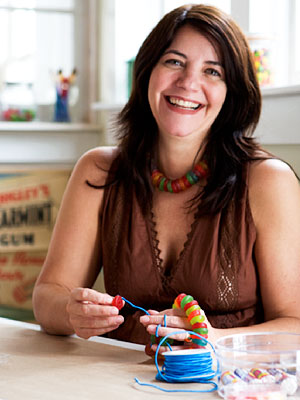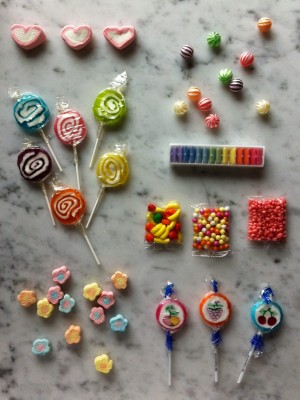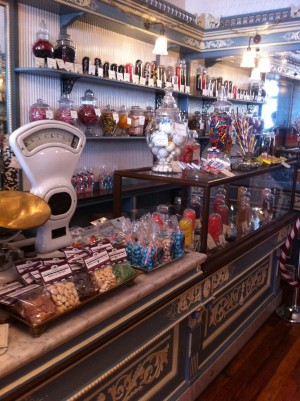While many of us grow up with parents, siblings or friends who dabble in cakes and other pastries, how many of us have ever seen chocolate bars, bon bons or gummy candies in the making? Candy historian and artisan Beth Kimmerle is not only one of the most talented confectioners in the contemporary candy game, but she’s also one of the industry’s most knowledgeable consultants. In anticipation of her upcoming workshop (Sept 17-18) at ICE’s Center for Advanced Pastry Studies, we caught up with Beth to discuss her passion and unusual career path.

What inspired your interest in candy?
I grew up in a suburb of Chicago, which was—and still is—a real candy and chocolate mecca. I also lived briefly in L.A., where I became very aware of See’s Candy (a major candy manufacturer, founded in the 1920s). My career in confections began in product development, buying and marketing for a large candy company called Fannie May Candies. With 250 stores, they were the largest candy retailer in the U.S. and their candy making factory was located next to my office. We manufactured classic American candies: caramels, nougat, buttercreams, marshmallow and hard candy. It was there that I learned how to make candy from some of the best in the business.

How did you start learning about candy history?
Back then, candy was sort of a step-sister to baking or chocolate work and not many culinary programs offered lessons in candy making. As I studied and collected vintage recipe books, I became intrigued by the history of confections. Today, I consider myself a confectionery historian, as well as a futurist. I study the past to understand the present. I understand the present to inform the future. And I continually work toward being a confectionery culinarist by honing my culinary and science knowledge.
And you also share that knowledge with others, as a consultant.
Yes, in addition to being an author, I spend much of my time as a marketing consultant for companies. That often means developing a recipe or formula for a product, but I also work on branding and marketing plans around chocolate and candy products. I just got back from a packaging show and research trip in Italy and I’m preparing for a 2-week professional course in the science of candy making. Moreover, I am trained in sensory evaluation and am currently developing a program that will help non-food people understand the science behind taste. In addition, I am working on a candy-themed exhibit that will be featured at the California State Fair. I really enjoy travel, as it allows me to explore factories and sweets from other cultures. In fact, I still feel like Charlie Bucket when I get an invitation to go into a candy or chocolate factory.

What do you see as the greatest candy-related challenges to the industry?
Commercial sweets are continually challenged, most recently with consumers reviewing labels and becoming adverse to chemical sweeteners and sugar. However, that has opened up a world of opportunity for artisanal candies and has the “candy cousin” category of nutritional bars exploding. It’s amazing to see what has happened to chocolate recently. We seem to hear about a new bean-to-bar or boutique chocolate company every day. Now, more regions than ever are growing great cacao and more consumers are demanding better product and origin information. As a result—much like the recent revolutions in wine and coffee—the entire system of chocolate production and distribution is changing. Sweets are always exciting!
Click here to sign up for Beth’s class and learn more about advanced pastry studies at ICE!




